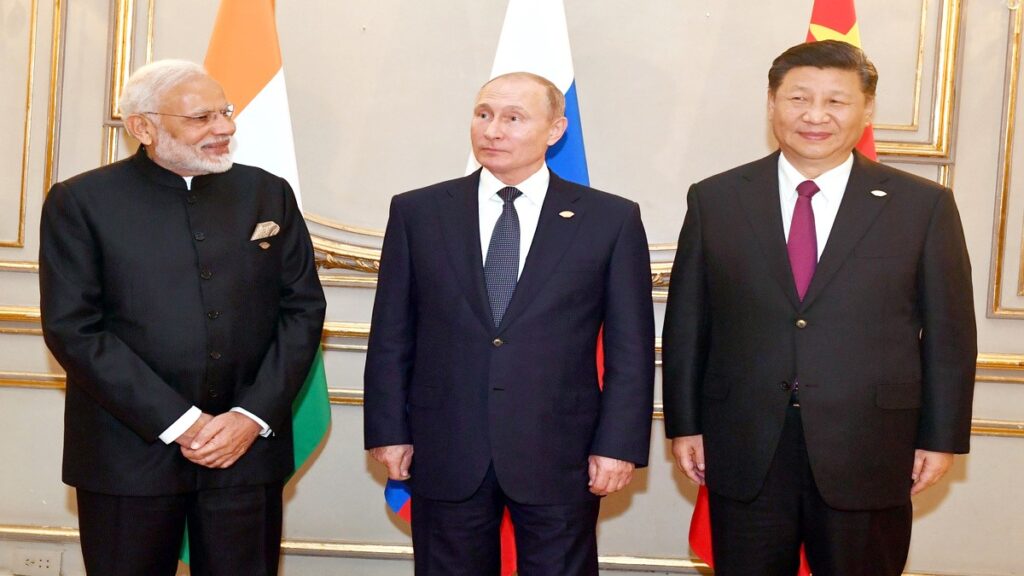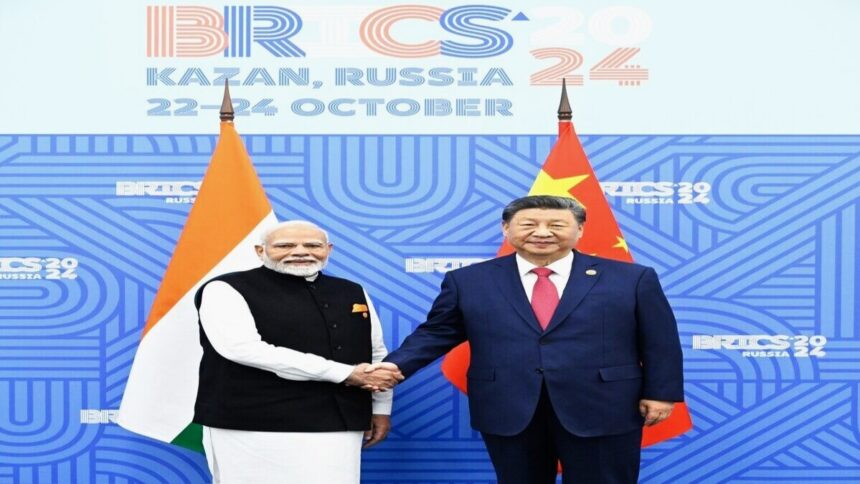In the complex landscape of India-China relations, the recent agreement on patrolling along the Line of Actual Control (LAC) marks a significant diplomatic achievement amid ongoing military tensions. Prime Minister Narendra Modi’s strategic engagement with President Xi Jinping not only reflects a commitment to resolving long-standing border issues but also underscores the challenges that lie ahead.
A New Chapter in India-China Relations
The resumption of patrolling in the Depsang Bulge and Demchok areas of East Ladakh is the culmination of extensive negotiations that followed the escalation of tensions in May 2020. Modi’s administration faced a critical test in balancing military readiness with diplomatic outreach, striving to maintain peace along the 3,488 km border. The meeting between Modi and Xi in Kazan was a pivotal moment, fostering dialogue and setting the stage for further negotiations aimed at de-escalation.
Met President Xi Jinping on the sidelines of the Kazan BRICS Summit.
India-China relations are important for the people of our countries, and for regional and global peace and stability.
Mutual trust, mutual respect and mutual sensitivity will guide bilateral relations. pic.twitter.com/tXfudhAU4b
— Narendra Modi (@narendramodi) October 23, 2024The Role of Diplomacy and Military Coordination
The high-level talks were not merely ceremonial; they were grounded in meticulous discussions involving military commanders and diplomats. National Security Advisor Ajit Doval and Wang Yi, China’s Foreign Minister, played vital roles in the Special Representative Dialogue, addressing military build-up concerns and establishing a framework for normalization of ties. The Working Mechanism for Consultation and Coordination on India-China Border Affairs (WMCC) held 17 meetings following the violent clash at Galwan, reflecting a commitment to resolving disputes through dialogue.

Key Outcomes of the Patrolling Agreement
The patrolling pact serves as a critical pillar for managing the border and preventing future conflicts. It allows Indian troops to access previously contentious areas, particularly the Depsang Plains and Demchok region, which have been fraught with legacy issues. This development is not only a tactical victory for India but also a diplomatic maneuver that re-establishes its presence in disputed territories.
The Importance of Trust-Building
The agreement is seen as a step towards restoring trust between the two nations. Both sides have recognized the need to avoid any unilateral military actions that could exacerbate tensions. The principles outlined in the 2005 border pact, which advocate restraint during face-offs, will play a crucial role in guiding troop behavior along the LAC. Modi’s mantra of “mutual trust, mutual respect, and mutual sensitivity” is vital for moving forward in a constructive manner.
The Road Ahead: Challenges and Cautions
Despite the positive developments, significant challenges remain. Experts in Indian strategic circles express caution regarding the implementation of the agreement. While the military and diplomatic groundwork has been laid, the actual execution will require careful monitoring to ensure compliance from both sides.
Unresolved Issues and Historical Context
Critics, particularly from the opposition Congress party, argue that the government is yielding to Chinese military pressure, pointing to historical grievances and unresolved border issues that date back to the 1950s. The legacies of past conflicts continue to haunt bilateral relations, and any misstep could derail the progress made thus far.
The Need for Continued Vigilance
As both nations navigate this complex terrain, the prospect of full troop disengagement and de-escalation will not be immediate. With tens of thousands of troops stationed on both sides of the border, the need for a careful, step-by-step approach is paramount. The Indian military’s readiness to patrol previously restricted areas will be a litmus test for the efficacy of the agreement.
Balancing Act: Opportunities Amidst Skepticism
The patrolling agreement provides a valuable opportunity for both India and China to manage their border disputes more effectively. However, this is contingent upon sustained diplomatic efforts and a commitment to transparency. The contrasting narratives presented by India and China following the Kazan meeting highlight the importance of clear communication and mutual understanding.
Moving Towards Normalization
Looking forward, both sides must remain engaged in dialogue to ensure that the agreement translates into lasting peace. The Special Representatives on the boundary question are expected to meet soon, signaling a willingness to explore mutually acceptable solutions. Nonetheless, experts advise a cautious approach: “trust, but verify” should be the guiding principle as the normalization process unfolds.
As the Indian Army prepares to resume patrols in sensitive areas, the lessons learned from past transgressions remain fresh. Both India and China face the monumental task of managing their borders in a way that prevents conflict and fosters cooperation. The upcoming months will be crucial in determining whether this newfound diplomatic engagement leads to a stable and peaceful coexistence or if the specter of military confrontation looms ever closer.
Read More: India-China Border Dispute: Hope for Peaceful Resolution at BRICS Summit





